National Park Service Cultural Landscapes Inventory: The Watchman, Crater Lake National Park, 2001
Analysis And Evaluation
Circulation
Watchman Trail, a .8-mile long route, was conceived, designed, and constructed during the period of significance to provide Crater Lake personnel and park visitors access to Watchman Observation Station, while simultaneously providing interpretive experiences to “bring the visitor into close contact with nature” (Unrau, 1988, 606). The trail begins at a parking lot located at Watchman Overlook along Rim Road (7600’), then follows a segment of the original alignment of Rim Road approximately 300 yards. The trail then spurs east, following a number of switchbacks, finally terminating at a set of stone stairs and stone masonry parapet located on the east and north side of Watchman Observation Station.
According to a Superintendent’s Annual Report from 1932, the trail was described as approximately half a mile in length, five feet wide, and aligned at a 15% grade. This grade and width not only eased the burden of travel for park visitors up Watchman Peak, but was also useful for park personnel as a bridle path (Greene, 1984, 164). During the period of significance, Watchman Trail was conceived as part of a network of trails at Crater Lake. Chief Landscape Architect Merel Sager approved of trail locations, while W.E. Robertson supervised construction of the trail in 1932 with thoughtful consideration given to its width, gradient, surfacing, and aesthetics. The trail was completed by day labor (Robertson 1932) to the “same standards as Garfield Peak Trail” which included strong rock parapets constructed to “insure safety” and “natural rock” cemented together to “blend in with the rustic topography of the rim”(Greene 1984, 164). Employing Naturalistic Landscape architectural theories of design during construction, Sager was heard to have “admonished” the crew working on the Godfrey Glen Trail to make the trail seem natural, for example, by “roughening the edges of a fallen tree trunk, through which the path was cut, to simulate the appearance of a natural path that had occurred over time” (Espey, recorded interview by Patricia Erigero, n.d.). Historic photographs reveal that this level of care was taken to the Watchman Trail. Also, historic photographs reveal that the trail was cross-sloped at approximately a 2% grade on the downhill side (This method of drainage is in use on the trail today). After the trail was surfaced with native ground, crews oiled the surface, as dust was perceived as a problem (Robertson 1932).
In present day Watchman Trail maintains its integrity of circulation. It embodies the engineering and Naturalistic Landscape architectural qualities intended by the Crater Lake Master Plan as envisioned in the 1920s. In addition, the trail continues to provide park personnel and visitors access and interpretive experiences as historically envisioned. Despite some deterioration and damage to the trail due to climatic conditions and Watchman Observation Station’s rehabilitation in 2000 (Huffman 2002), the majority of the trail reflects the alignment, materials, grading, and width used during the period of significance. The trail continues to provide the overall feeling that was intended by designers during the period of significance, to seamlessly blend the trail with its scenic context. Circulation therefore, is a landscape feature that contributes to the overall integrity of the Watchman cultural landscape, combining Watchman Observation Station and Watchman Trail.
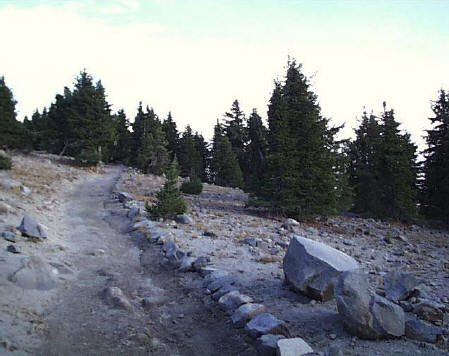 |
| Contemporary photograph showing Watchman Trail. The trail is 5′ wide and lined with stones during the historic period to mark its edge on the down slope (CCSO 2001). |
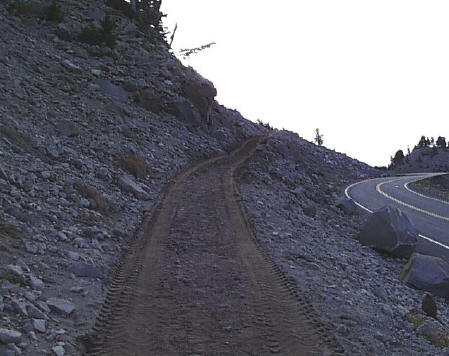 |
| Contemporary photograph showing Watchman Trail. The trail is wider along this 200 yard segment as it traces the original alignment of Rim Road (CCSO 2001). |
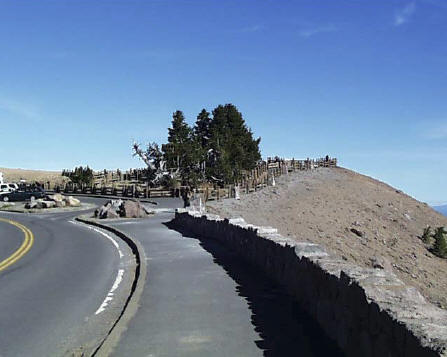 |
| Contemporary photograph showing parking lot located at Watchman Overlook, 7600′ (CCSO 2001). |
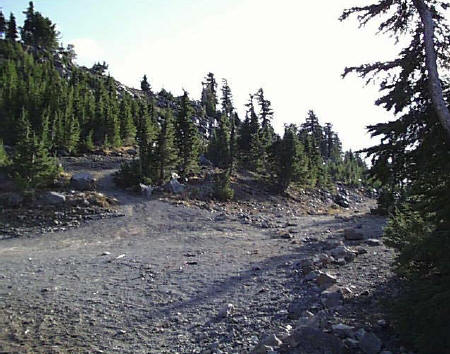 |
| Contemporary photograph showing Watchman Trail spurring to the left from the original alignment of Rim Road which continues to the right (CCSO 2001). |
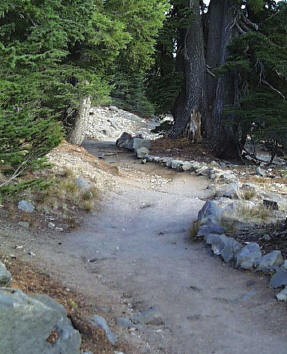 |
| Contemporary photograph illustrating how Watchman Trail was historically aligned to avoid Whitebark pines and Mountain hemlocks (CCSO 2001). |
Other pages in this section


